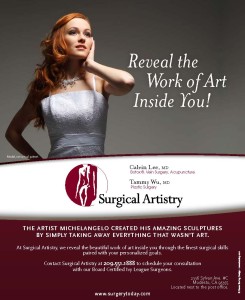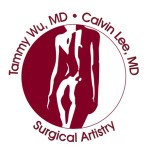Here’s another public forum cosmetic Botox question.
Can I use Botox for my cheek pushing up on eye when I smile, making it look smaller than other?
I have had 2 ptosis surgeries On my upper eyelid it has been about 4 weeks since my 2nd. the 1st 1 was an over-correction. Now I don’t think it is so much my top eyelid. It is raised a little more than before any surgeries. I’m still not happy with my eyes. If you notice when I smile it really goes to one side. And I’m okay with that. But when I smile only 1 cheek pushes up on my eye and makes it look smaller. i don’t want to do anymore surgeries. Could Botox fix my check from coming up?
My Answer:
What a great question! I have to break up my answer into several parts
BOTOX FOR CROWS FEET
Botox is FDA approved for treatment lateral canthus lines (crows feet). These are the lines on the side of the eyes which become more pronounced when we smile. Through our experience treating these crows feet, we’ve found that we can affect eye size, brow lifting, and even cheek elevation.
FULL vs. PARTIAL TREATMENT of CROWS FEET
In a situation where one just wants the cheek to elevate less with smiling, a full treat of crows feet might be too much. However, if one is bothered by the potential of crows feet (meaning that BOTOX can prevent crows feet as well as treat crows feet), the a full treatment could work on both sides, and may even out the appearance. I can envision a possible treatment of the lower crows feet on the side with the cheek elevation “problem.” I can also see a potential patient of mine benefiting from full treatment on both sides and with added Botox to the “problem” side.
TREATING THIS PROBLEM IN STAGES
If I had a patient coming in for this issue, I would consider treating this issue in stages. Starting with a low dose targeting the lower crows feet area (obicularis oculi muscle) and bringing the dose higher perhaps separated by about 2 weeks. And maybe even considering treatment on both sides to keep up with symmetry issues. With good note taking, we could figure out the optimum solution if possible.
MOUTH MUSCLES MIGHT GET IN THE WAY
Cheek elevation is also caused by muscles that affect the smile of your mouth – Zygomaticus Major and Zygomaticus Minor muscles. These muscles, if targeted too strongly with Botox will affect the symmetry of your mouth. Thus if the bulk of your cheek is formed from these muscles, Botox may not be able to give you your 100% desired result. But I still think that your desired effect is possible without injecting Botox into muscles that affect your mouth. Fortunately with a gradual staged approach, you might gradually find a solution. If a solution isn’t possible, I would say that it’s because of the mouth muscles and the amount of natural fat pads we have on each side of the face which can compress and change shape on animation of our face (ie. smiling).
THE QUEST FOR SYMMETRY
I understand that symmetry is important. However, we should keep in mind that it isn’t human to be exact mirror images of our selves on each side. We are usually strong on one side – for example, being right handed. This contributes somewhat to our facial muscles as well. The natural asymmetries in a person’s face can be considered a strength and add flair. Thus, sometimes, it’s ok to go with the idea that the sides of our faces are like siblings, not genetic clones.
IN SUMMARY
Botox can possibly solve this problem of smaller-eye, higher-cheek. If one is interested in wrinkle treatment or prevention – it makes using Botox even better. Consider partial or full treatment of crows feet or even heavier application on the elevated-cheek side. But keep in mind that Botox can make other parts of our face appear asymmetrical – like the mouth or the eyebrows – so be careful, and good luck!
Calvin Lee, MD
Botox injections in Modesto, California

Thank you for your question. Without having seen you in person, I’m answering the best I can without physical examination info and a one-on-one dialogue. My comments are meant for a general public discussion to help others who may have similar concerns. I’m also using my answers to build up library of information for my own patients and also to see how my answers compare with other doctors. There is always much for us to learn from each other. My answers are generalized medical information only, not directed medical advice. For medical advice please see your doctor/surgeon in person.

